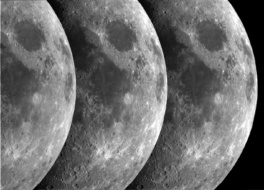The ISS is about to get a new visitor.
On Saturday, JAXA launched its latest ISS cargo vehicle type—HTV-X—aboard an H3 rocket. The first mission, HTV-X1, is scheduled to arrive at the orbital lab on Wednesday, where it will be captured by JAXA astronaut Kimiya Yui using the Canadarm2 robotic arm.
Fully loaded: The cargo vehicle, which was developed by JAXA and Mitsubishi Heavy Industries (MHI), is an upgraded version of JAXA’s first HTV—nicknamed Kounotori or “white stork”—which flew nine resupply missions to the ISS between 2009 and 2020.
At 8 m long, HTV-X is roughly 2 m shorter than its predecessor. However, HTV-X has roughly the same payload capacity, with 4,070 kg (8,900 lb) of pressurized cargo, and 1,750 kg (3,900 lb) of unpressurized contents.
HTV-X is also equipped with solar arrays capable of generating 1 kW of energy in total, which can power internal payloads, including refrigeration units to deliver food or scientific experiments that need to be kept at low temps.
To help keep cargo fresh, HTV-X also decreased the amount of time that cargo can be onboarded before launch, from 80 hours on Kounotori to 24 hours on HTV-X. HTV-X is designed to stay docked to the ISS for up to six months, but it can fly in orbit for another year and a half after disembarking to perform in-orbit experiments and technical demonstrations for customers.
What’s next: While HTV-X increases the pool of cargo delivery spacecraft options for the ISS, JAXA and MHI developed HTV-X to serve customers beyond the orbital lab, which is expected to be decommissioned at the end of the decade.
In its description of HTV-X, JAXA confirmed the possibility of serving future commercial destinations in LEO. Officials also plan for the vehicle to deliver cargo to the Gateway station, which will be placed into lunar orbit as part of the Artemis campaign.




